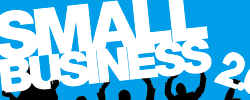
Popular Reading

Balance Sheets
Companies whose shares are officially quoted on the Stock
Exchange have to publish full accounts at the end of their trading (ear, and an interim report halfway through the year. How to read t company balance sheet is discussed in Chapter 14. Here we shall ooutline some of the facts that a would-be buyer of shares can learn 'from the published accounts. A specimen simplified balance sheet Ind profit and loss account appears opposite.
It is customary for a company's assets to be listed on the right-hand side of the balance sheet, and the liabilities on the left. One of he liabilities will be the nominal value of the issued ordinary shares, and another will be the 'reserve', which is the total of the accumulated undistributed profits over the past years. If these two figures tre added together you have a figure for what is often described as ordinary shareholders' funds'.
Assets value
If you now deduct from the figure of ordinary shareholders' funds the total balance sheet value of those assets that may have no saleable value - such as 'Preliminary Expenses', 'Goodwill' or 'Loss on Profit and Loss Account', which may be thought of as fictitious assets - and divide the resultant figure by the number of ordinary shares in issue, you arrive at a figure for 'value of assets per share'. You are now in a position to compare the market price of the share with its net asset value, but unless you are an expert investment analyst you may not be able to draw any safe conclusions from any disparity between the two figures without exhaustive research into the reasons for it. People don't buy shares just because of their asset value, but for their potential income and growth.

Equities Example
Which of the following investments gives, to a person liable only to 30% basic tax, the better flat yield, ignoring all brokerage and other charges?
(a) 5% funding stock at a price of 70;
(b) £1 shares priced at 210 paying a net cash dividend of 13p.
Answer:
(a) £70 invested will yield £5 gross, which works out at 7.143% gross;
(b) £2 . 10 invested yields 13p net. Thus £210 invested would yield £13
net which works out at 6.19%. Since this is a net after 30% tax figure one must divide by 7 and multiply by 10 to give 8.84% gross.